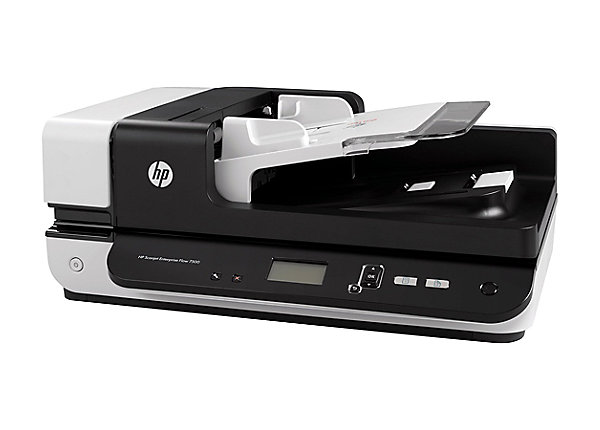Apple’s M3 processor faces a formidable challenger in Qualcomm’s Snapdragon X Plus, as the tech giant makes bold claims about its performance and efficiency. With the potential to rival or even surpass the M3, the Snapdragon X Plus could shake up the laptop market dominated by Intel and Apple. In this article, we investigate into the key differences between these processors and explore the implications of Qualcomm’s claims on the tech landscape.
Key Takeaways:
- Qualcomm Snapdragon X Plus Performance: Qualcomm claims that its Snapdragon X Plus chip matches or outperforms Apple’s M3 processor, with a 10% performance margin. The chip also boasts better power efficiency, potentially posing a significant threat to Apple’s M3.
- Implications for Intel: If Qualcomm’s benchmark claims hold true, the Snapdragon X Plus could challenge Intel’s market dominance in the CPU market for laptops. With better battery life and competitive performance levels, Intel could face tough competition from Qualcomm.
- Potential Shift in Laptop Market: The emergence of the Snapdragon X Plus as a competitor to Apple’s M3 and potentially Intel’s processors could lead to a significant change in the laptop market. Consumers may benefit from increased competition and technological advancements in laptop processors.
Qualcomm Snapdragon X Plus: The New Challenger
Features and Specifications
Plus, the Snapdragon X Plus features a 4-nanometer process with 10 cores, boasting 42MB of total cache. Compared to its flagship counterpart, the X Plus lacks the dual-core boost but still promises impressive GPU performance with 3.8 teraflops.
Performance Claims vs. Intel Core Ultra 7 155H
Plus, Qualcomm’s benchmarks for the Snapdragon X Plus indicate performance levels comparable to the Intel Core Ultra 7 155H while offering a claimed power efficiency advantage of 54%. If substantiated, these claims could position the X Plus as a formidable contender in the processor market.
As a potential challenger to both Intel and Apple, the Qualcomm Snapdragon X Plus presents an intriguing prospect for the laptop market. Not only does it promise performance levels on par with the Intel Core Ultra 7 155H but also boasts significant power efficiency advantages. If these claims hold true, the X Plus could signal a shift in the industry, providing consumers with a viable alternative to established players like Intel and Apple.
The Apple M3 Comparison
What a 10% Performance Margin Means
Apple should take note of Qualcomm’s claim of a 10% performance margin over the M3 processor. Even if it turns out to be true, this could signal serious competition for Apple in the processor market.
This 10% performance margin could translate to significant differences in tasks such as gaming, video editing, and multitasking. With Qualcomm potentially offering similar performance to Apple’s M3, users may have a tough choice to make between the two brands when it comes to laptops.
Implications for Intel and Apple
Threat to Intel’s Market Share
Unlike the current market shares Intel holds (75% for laptops and 64% for desktop PCs), Qualcomm’s Snapdragon X Plus could pose a significant threat. If the chip can achieve performance levels close to Apple’s M3 while maintaining superior battery life, Intel could face serious competition in the processor market.
Challenging Apple’s M3 Dominance
One of Apple’s strengths in the laptop market is the performance of its M3 processor. The Qualcomm Snapdragon X Plus is claiming to match or even outperform the M3, potentially challenging Apple’s dominance in this area. If Qualcomm’s benchmark boasts hold true, Apple may need to reassess its strategies to maintain its position.
Intel’s current issues with decreased battery life in laptops could also play a role in this dynamic. If Qualcomm’s Snapdragon X Plus can deliver on its promises of performance and efficiency, Apple may face increased pressure in the market.
Real-World Performance: The Surface Pro 10 Example
Upgraded Features and Performance
On top of a brighter OLED screen and an enhanced front-facing webcam with AI capabilities, the Surface Pro 10 is set to be equipped with the Snapdragon X Plus chip from Qualcomm. This combination promises superior performance and better battery life, showcasing a potential game-changing shift in the laptop market.
A Qualcomm-Powered Surface Pro 10
An exciting development is the inclusion of the Snapdragon X Plus chip in the upcoming Surface Pro 10. With Qualcomm’s claims of matching the Intel Core Ultra 7 155H in performance while maintaining a 54% lead in power efficiency, the Surface Pro 10 could challenge both Intel and Apple in the laptop market.
Example: The Surface Pro 10, featuring Qualcomm’s Snapdragon X Plus chip, could signify a turning point for laptop performance and battery life. If Qualcomm’s benchmarks hold true, we may see a significant shift away from Intel towards Qualcomm-powered devices, offering consumers more choice and potentially disrupting the current market dynamics.
Gaming on Snapdragon X Plus: A New Frontier
Baldur’s Gate 3 on Snapdragon X Elite
All eyes are on Qualcomm as Baldur’s Gate 3 was successfully played on the Snapdragon X Elite through emulation. This achievement is a testament to the chip’s capabilities, especially when it comes to handling AAA titles on laptops.
Potential for AAA Titles on WoA
With the success of Baldur’s Gate 3 on the Snapdragon X Elite, there is great potential for other AAA titles to be playable on Qualcomm’s chips, including the upcoming Snapdragon X Plus. This could pose a significant threat to Apple’s M3 MacBook gaming ambitions and further solidify Qualcomm’s position in the processor market.
Power Efficiency: A Key Advantage
Qualcomm’s Claims vs. Intel’s Battery Life
On the one hand, Qualcomm claims that its Snapdragon X Plus outperforms the Intel Core Ultra 7 155H on power efficiency by a significant 54%. This could be a game-changer in the laptop market, where battery life is a crucial factor for consumers.
The Importance of Long-Lasting Battery Life
It’s no secret that long-lasting battery life is a key selling point for laptops. With Qualcomm’s Snapdragon X Plus potentially offering performance levels comparable to the Apple M3 while maintaining a standard of around 20 hours of battery life, it could pose a serious threat to Intel’s market dominance. This combination of power efficiency and performance could reshape the laptop market for the benefit of consumers. This makes a notebook a truly portable machine. The idea of not having to plug in for long periods AND not having to suffer throttling or performance loss is the Holy Grail of portable computing, no matter how long Intel mocked it with their power hungry heaters. Forgive us consumers for wanting Power AND Portability. The nerve of us!
Final Words
Following this analysis, it is clear that Qualcomm’s Snapdragon X Plus poses a significant challenge to Apple’s M3 processor in terms of performance and efficiency. While the accuracy of Qualcomm’s claims remains to be seen, the potential competition between the two giants could lead to exciting developments in the laptop market. As consumers, we can anticipate better products and enhanced technology as these industry leaders strive to outdo each other.
As for the touted more powerful Apple M4 on the horizon, who cares? There is a new arms race in the Windows on ARM vs Apple market segment and the competition is what this market segment needs.
For up to date Tech and Crypto news please bookmark and check frequently our home page.














